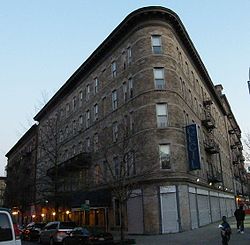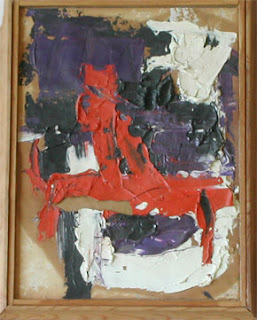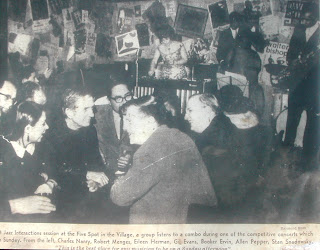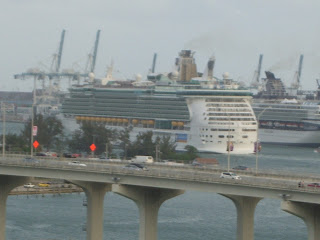It's a good time to look ahead. Spring is almost here, my students are on spring break, my work load in the Orchestra is light for the next few weeks.
While I'm certainly going to relax a bit more during this time, it's also a great opportunity to plan ahead.
What have I got coming up in the next couple of months?
- Full recital at St. Paul's Episcopal Church in Cleveland Heights on May 6th at 7:30pm
- Three performances at the International Double Reed Society Conference, May 31-June 4, Tempe, Arizona
Now is a good time to look at the calendar and set some goals.
Setting goals is one of the most important jobs for any musician involved in studying at a music school, taking lessons or preparing self-produced concerts. It helps structure practice time and helps weed out wasted time and energy. Believe me, there's a lot of wasted time in most people's practice habits!
I divide goals into three categories:
1.
SHORT RANGE GOALS
Short term goals are those in which the work must be done in a short space of time - anywhere from a day to a week. This week for me this means:
- very focused practice of difficult passages in this week's orchestral music to ensure perfect execution is repeatable in rehearsals and concerts.
- Tweaking a couple of nearly-finished reeds and moving them into a state in which I know what they can and can't do well so I can rely upon them for this week's concerts.
- Achieving speed and evenness in my scales (this week it's b melodic minor)
- Working on my legato playing
- Learning a Bertoni etude
2.
MIDRANGE GOALS
This could be any goal you want to reach in a matter of weeks. For me this means primarily reed making. My drying rack is nearly empty of blanks. With some big recitals and lots of orchestral playing looming in the next couple of months, I've got to replenish my supply.
- Splitting, pre-gouging and gouging cane from a couple of different sources. I'm very afraid of relying upon one source for good cane. Using different sources gives me more versatility in reed choices. Some cane works well for soft playing, other works well for solo playing, etc.
- Profiling, etc. to make blanks that I allow to dry for several weeks. My goal is to have 50 blanks on my drying rack by the beginning of April. That should give me some good choices for the end of April/early May and on into June when I don't want to be spending time gouging, profiling, etc.
- Going through some 40 reeds I've left aside because they didn't seem worth finishing at first to see if there are some "late bloomers" in the bunch. I always find a few this way! With the weather changing, some reeds that don't work well in winter may perk up!
3. LONG RANGE GOALS
These could be any big concerts, auditions or recitals for which you are preparing. They could also be any goals you have for improvement that just take some time -- embouchure change, posture/hand position changes, end of semester goals you set with your teacher (improving intonation, learning vibrato, etc.).
Ideally, short range goals should be set up to integrate with long range goals so you can see improvement along the way and sense what amount of effort is enough. Long range goals can easily fade away without concrete benchmarks set in the form of short range goals. Below are my long range goals and some goals I've achieved in reaching them.
- Prepare five pieces for performance and arrange and prepare movements of 3 Shostakovich string quartets for performance.
I arranged the Shostakovich pieces over Christmas break. My friend, Rich Shanklin put them in Finale format for me last month. TrevCo has agreed to publish them. My students and I read through them last week to check for mistakes. My quartet, The Men Who Don't Bite will start rehearsing them at the end of April.
The pieces are
Debussy's Syrinx (which I've arranged for bassoon),
Patrice Sciortino's Sorcels,
Alain Bernaud's Hallucinations,
Margi Griebling-Haigh's Sortilège and
Miguel del Aguila's Hexen.
This is a huge amount of difficult music to learn, so I've had to prioritize, fast-tracking some pieces, putting others on hold.
The only piece I've played before is
Hexen, so I've let that one go so far. I've just read through it a few times to refresh my memory.
Margi finished her piece a few weeks ago, so I'm just starting to work on it. Randy Fusco, my pianist, and I will read through the piece for the first time next week. That leaves
Debussy,
Sciortino and
Bernaud.
The
Bernaud and
Sciortino are by far the most difficult pieces of the group. I started working on them in December (a lead time of 6 months!). Details about how I have worked on them in a future blog. Suffice it to say that I can now play the most technically difficult passages in the
Sciortino at performance tempo with great accuracy when isolating them, but am not secure about their accuracy in a run-through yet. The passages in the
Bernaud remain under tempo but are within 90% of performance tempo, ditto about a run-through of this one. The first recital is 2 months away, so I'm comfortable with the progress on these two.
In addition, I've done some listening, especially to
Syrinx (several flute recordings), but also to the
Bernaud. No recording of the
Sciortino exists, but I've been in touch with the dedicatee, Alexandre Ouzonoff, who has promised to help with the piece. More on listening to recordings in a future blog.
I've made most of the broad artistic decisions about the pieces (program order, tempos, style, etc.), but remain open to changing them when performances get closer. This holds especially true for
Sortilège and
Hallucinations, because they are pieces with piano. More about working with pianists in a future blog!
In reviewing my progress I can state the following with confidence:
- Because I've given myself plenty of time to prepare, I'm on track so far to have these recital programs in good shape by the time May and April come around.
- Progress on the technique of the new pieces is on track
Along with reed making and continued practice I'll do the following in the coming weeks:
- Start re-learning Hexen and perhaps coach it with Randy playing the piano reduction a few times to get ready for playing it with the string orchestra in Tempe.
- Continue the work on Margi's piece. Play it for her to get her input.
- Take a break from the note-crunching practice on the other pieces. Get back to it in a few weeks.
- Instead, study the piano score of Hallucinations to see how it integrates with the bassoon part and search out other music by Bernaud and Sciortino to learn more about their styles.
- Go back to my recordings of these pieces to absorb other players' ideas and more perfectly form my own.
- Start recording myself performing these pieces in a few weeks.
Well, now that I've written all this down, I really have to do it! Time to go, I've got some cane to split!!











